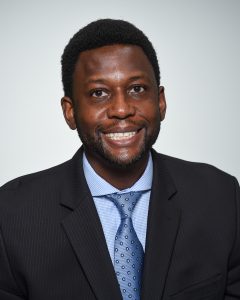
Photo: Dan Newman on Unsplash
Toronto wants greater control over its digital destiny
12 April 2022
by Sarah Wray
Sarah Wray explores Toronto’s new Digital Infrastructure Strategic Framework, which aims to provide better transparency for residents and keep the city’s options open.

Toronto’s new Digital Infrastructure Strategic Framework (DISF) aims to give the city and residents more control over how technology is procured, implemented and maintained. This refers to physical infrastructure such as sensors, cameras and broadband networks, as well as software and algorithms, mobile devices like robots, vehicles and cellphones, and data collected digitally.
As the increasing reliance on digital infrastructure causes “significant shifts in traditional power structures,” the 105-page framework addresses issues such as equity, privacy and security, transparency, and autonomy. It underpins greater resident participation in decisions related to digital infrastructure and also paves the way for the city to demand more from technology vendors in terms of access, interoperability and intellectual property.
Lawrence Eta, Toronto’s Chief Technology Officer, told Cities Today: “Often what happens is that technology or data are not necessarily seen as areas where you seek so much consultation [as you would when] planning roads, transportation or housing.
“[This framework] starts to show that the public need consultation, the stakeholders, the elected officials, everybody – it sets a very strong precedent for cities globally.”
He said it would enable greater trust and confidence in the services the city provides.
Catalyst
The framework was approved unanimously by Toronto City Council last week and has been three years in the making, following a council directive in February 2019.
At that time Alphabet’s Sidewalk Labs was working with government consortium Waterfront Toronto on a now-abandoned proposal for a futuristic, data-driven development along Toronto’s eastern waterfront. The project drew concerns over transparency, data and privacy.
Eta says this was a “catalyst” for recognising that cities needed to be more proactive about digital infrastructure.
Shaped with input from a Community Advisory Group, members of the public and industry stakeholders, the framework has shifted from a plan to a principles-based approach which Eta says is more actionable and flexible.
The principles are equity and inclusion; a ‘well run’ city; society, economy and the environment; privacy and security; democracy and transparency; and digital autonomy.
Eta commented: “The principles live past any point in time so that’s very different.”
Concrete actions will include a data governance framework, digital equity policy and the creation of a public advisory board. The city could also explore using an AI register like those set up by Amsterdam and Helsinki.
Bianca Wylie, Co-founder of Tech Reset Canada, was a member of the DISF community advisory group and participated in public engagement events. She told Cities Today it is “well past time” for greater public involvement.
“The framework provides us with a helpful way to think and talk about digital infrastructure decisions more democratically,” she said.
Wylie, who has been referred to as “the Jane Jacobs of the smart cities age”, welcomed the adaptability of the principles-based nature of the framework and said it is a good tool to support digital literacy.

“Tech is not a highly accessible topic,” she commented. “Making it more accessible is a necessary pre-condition for the long-term work of holding city governments accountable for public technology investments.”
However, Wylie also believes there are areas where the framework could go further – particularly related to accountability.
She noted, for example, that the framework lacks an asset map: “We the public don’t know what our current public technology investments even are. They aren’t organised to be understandable in the city budget either. Without a starting point, it’s not possible to strategise on how to best transform and evolve our digital infrastructure.”
Further, she said that the framework does not materially increase oversight or enforcement.
“City staff could backfill almost any decision they want to make using the language of this framework – it’s high-level and does not set out implementation rules.”
Ways to strengthen this could be a related implementation plan, and dedicated staff to oversee it. Wylie also suggested formally adding responsibilities for the implementation of the framework into public service job descriptions and performance reviews, and potentially creating a new office for justice issues related to digital transformation.
Eta said the city will train staff on implementing the DISF via specific use cases as they arise. A senior-level innovation steering committee will also help to cascade the strategy throughout the organisation.
It’s a “change management” process, he said.
What is digital autonomy?
The principle of ‘digital autonomy’ was added to the framework as a result of community engagement.
It aims to ensure the city can “maintain control in the selection, use and design of its digital infrastructure, so that it – and its residents – can act with autonomy and in a self-determined manner within the digital realm.”
Examples cited in the report include ensuring digital infrastructure is “unlocked” so that the city can modify, repair or replace it according to needs. Enabling interoperability between digital infrastructure systems is important for the city, and individuals should also be able to access and exert some control over personal information about them.
Strategic priorities for the city are considering open-source technologies where possible and encouraging the use of open standards and Application Programming Interfaces (APIs) to support interoperability, data sharing and collaboration with external innovators.
Wylie commented: “Digital autonomy for cities is critical…Decision-making and governance and the shaping of public services, and cities themselves, cannot happen through the use of privatised infrastructures and code bases.
“If we want to have a say in how our technology functions, we have to be consistent in expanding our control over it. Public money should mean public code when possible. We can shape markets for public-purpose tech if we want to take this principle seriously in practice.”
Decisions should also be about whether technology is the right solution in each case, and whether money could be better invested in other ways, she said.
Intellectual property
The city also wants to reap more public benefits when value is generated from the creation of intellectual property made possible through the use of digital infrastructure.
This includes instances where the city helps to develop, improve or co-design a solution, making it more beneficial and scalable to other cities. Eta highlighted that Toronto has helped make products more accessible through the Accessibility for Ontarians with Disabilities Act (AODA) and can serve as a testbed for emerging technologies and policy modernisation.
With a population of almost three million, “Toronto is scale,” Eta commented.
In return: “There has to be a residual benefit and it can be quantifiable or qualitative.”
This could mean equity and economic requirements, or cost benefits – including the city requesting a share in revenue, which is a new area for municipalities.
“For most cities, the revenue source is really taxation,” Eta said. “There is only so much you can have in a revenue source of taxation. And to keep cities evolving, we have to look at other revenue sources. To me, cities are the biggest areas to drive that so we can’t keep just a revenue source that was built many years ago. So, this could be a revenue source, it could be a cost avoidance, it could be a cost neutral [arrangement] whereby we’re not charged for the licences.”
On this point, Wylie urges caution, saying such a model would create conflicting incentives and promote techno-solutionist thinking.
“This is a terrible idea for cities,” she said. “Cities and residents must hold their vendors accountable. Vendor lock-in is a huge problem currently and this idea could make that problem worse – what incentive does a city have to get out of a contract when that contract creates revenue?”
“The city can’t be both a customer and a business partner.”
Eta said it is an area that warrants a broader conversation.
“The mechanism of digital autonomy falls on the responsibility of the City of Toronto and how we can generate value to our stakeholders,” he said. “The city is precisely trying to limit vendor lock-in and that would be a case-by-case basis as structured through procurement and legal terms and conditions. It is therefore the onus of the city to think creatively and ensure through technology contract terms and architecture design we provide opportunities to identify the appropriate business cases that ensure our fiduciary responsibility is noted and the best interest provided for the public.”
He added: “In Toronto, we are expanding thought leadership into [meaningful] practice to meet the feedback from our communities and become proactive with new ways of procuring and implementing digital infrastructure. Naturally those changes will test the existing way of working but it is incumbent on leadership to set new approaches and that is why the DISF is groundbreaking for cities to build that dialogue.”
Living strategy
The DISF is intended as a “living document” that will evolve over time with further input from the community.
It maps closely to the principles and framework being pioneered by the Cities Coalition for Digital Rights, a network of over 50 cities. Members of the coalition provided input on Toronto’s draft framework and the city will feed back into the group’s collective work.
“I think globally this will start to create a shift with a city the size of Toronto taking this very principled approach,” Eta said.











